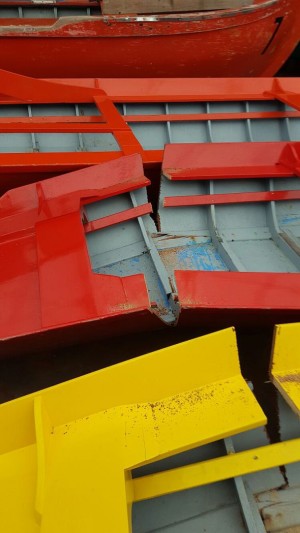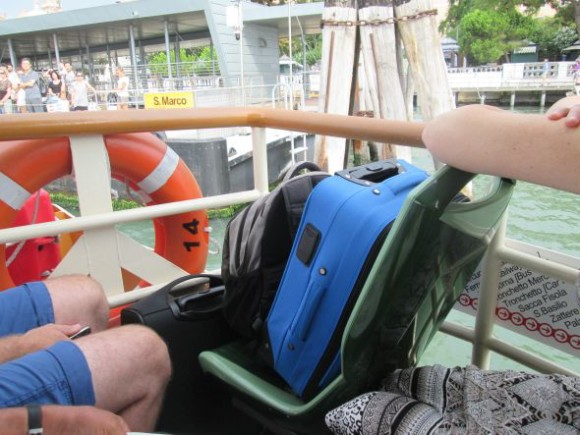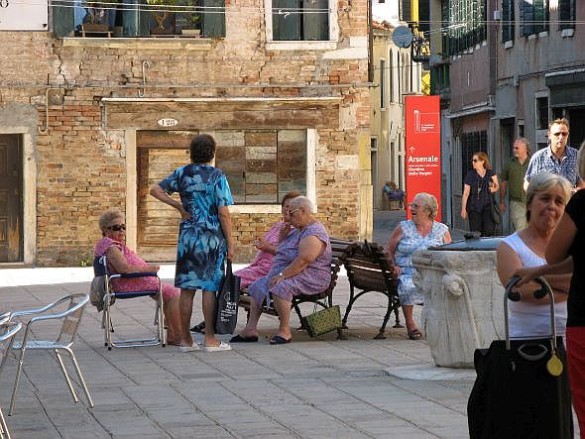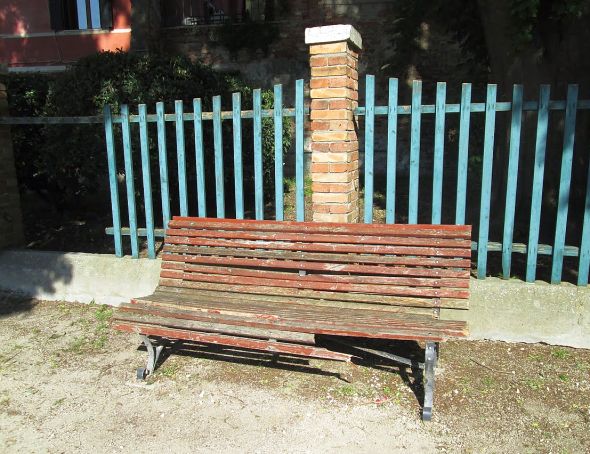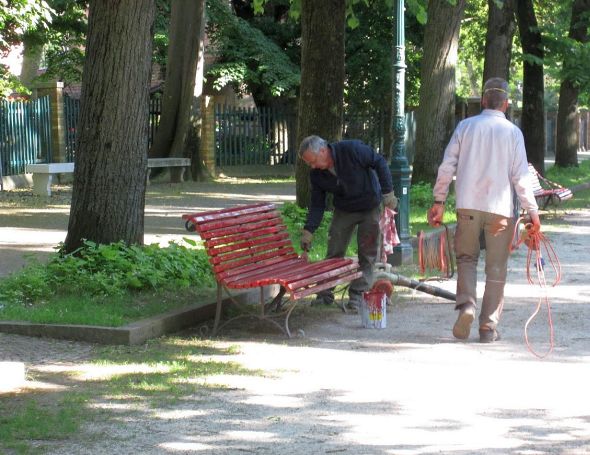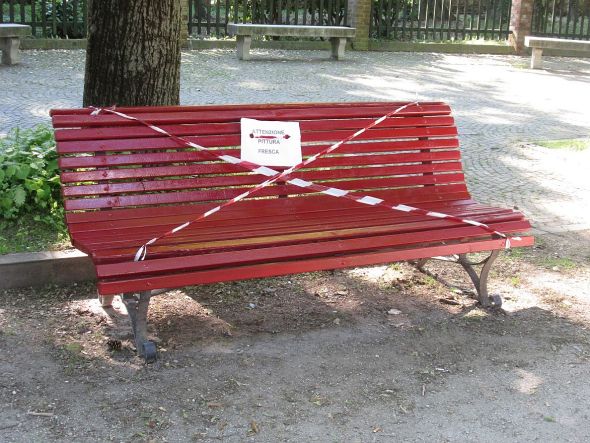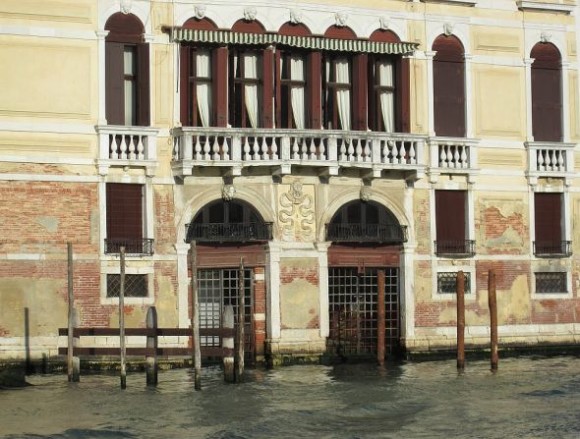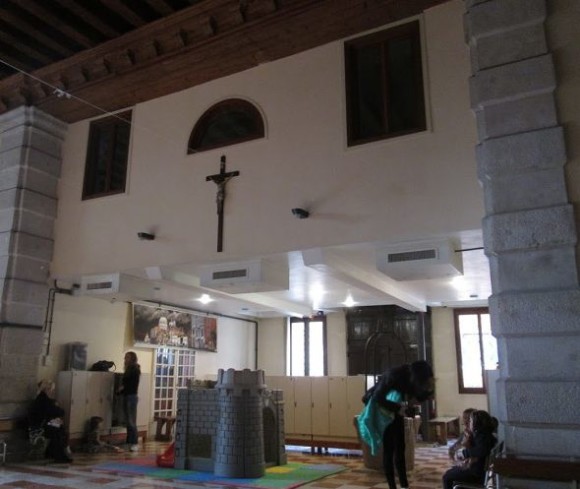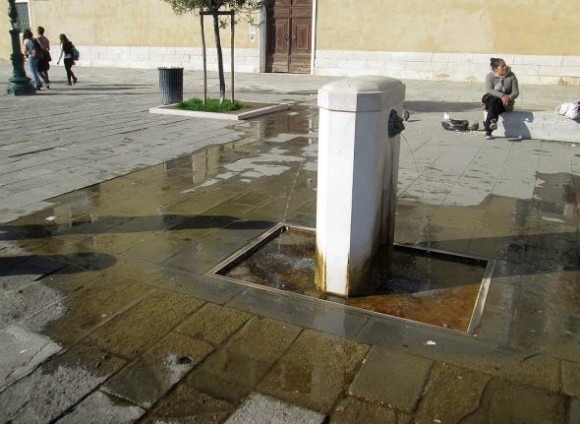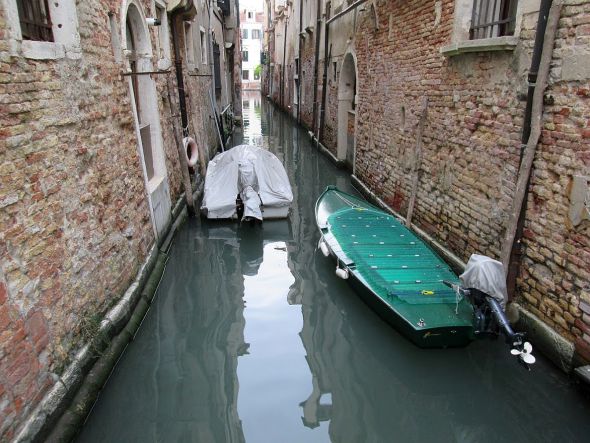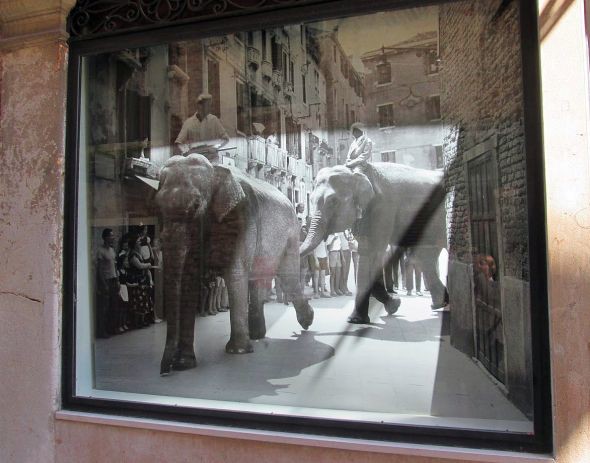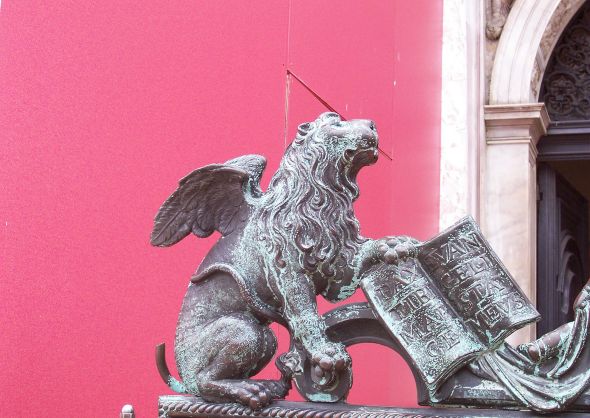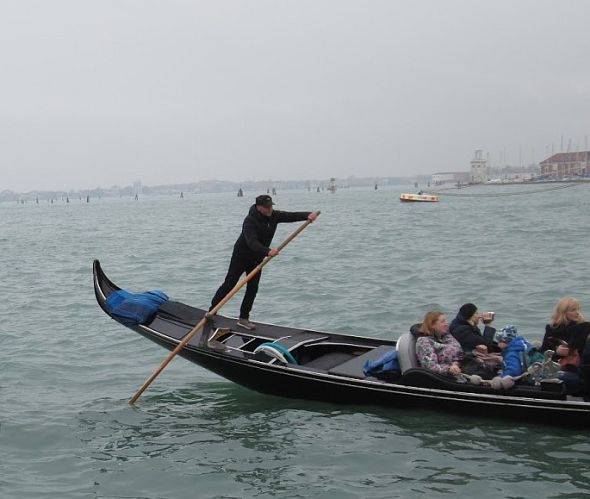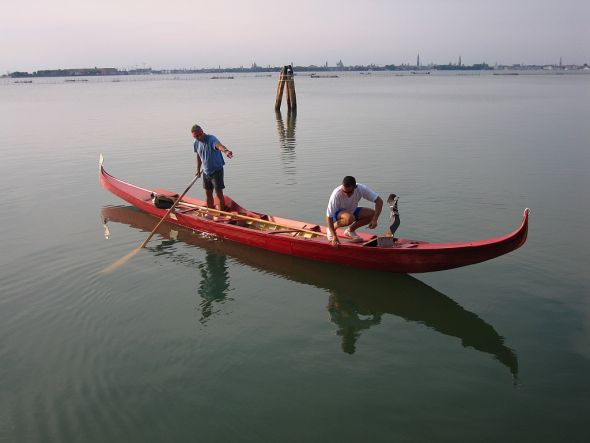
Just when I had concluded that there was nothing different or interesting to say about Venice, just when I thought life here was going to continue to grind deeper and deeper into its rut (same old problems, same old remarks, same old endless cycle of birth and rebirth), comes a blast of rage from person or persons yet to be identified.
Whoever they were, they trashed 7 of the gondolinos belonging to the city, discovered just today on the last day of the gondolino eliminations for the Regata Storica. The “Storica,” as you know, is the ultimate race, and it is conducted aboard the gondolinos. There is a total of 9, plus the reserve boat. Three boats, which were in another place and therefore escaped the axe murderer(s), weren’t much to work with for the eliminations today, but the nine two-man crews were divided into three sets of three, and extra time was eaten up with the removing and re-installing of the forcolas of each rower at each change. The mayor has tweeted that the boats will be repaired in time for the race on Sept. 4. Five boatyards have thrown themselves into the work.

Who would do such a thing? Plenty of police are working to find out. But who would WANT to do it? Who indeed? It might be disaffected office-seekers, or environmentalists protesting deforestation, or people who want Jodie Foster to fall in love with them, or anything.
There has been tension in the rowing world recently, it’s true. But until all the dust has settled, and been left there as long as I usually leave it anywhere, and then finally Pledged away, I’m not going to start theorizing.
I can mention, however, that a sense of anarchy stretching beyond the world of rowing seems to be threatening what ought to be well-earned somnolence in the city. Tourists keep trying to swim in the Grand Canal. A New Zealander, one of the crew of a yacht in port, got drunk a few nights ago, jumped off the Rialto Bridge, and landed right on the windshield of a water taxi passing below. The mariner is in the hospital in very bad condition, and the taxi is also in the shop.
Here is a recent video from Roberta Chiarotto, on her Facebook page https://www.facebook.com/roberta.chiarotto/videos/10209231322756467/
We see some young people in their bathing suits in Campo San Vio, heading for a refreshing dip. The voice of the Venetian woman reprimanding them, in English and German, basically says “This isn’t Disneyland, it’s a city. You can’t do this.” For those (like Lino) who remember swimming in the canals as little tykes — naked, learning to swim tied to their mother’s washboard — may I say that there was less dangerous traffic then, and by the way, they were merely little tykes. Healthy full-grown hominids who are not in their own back yards should be aware, if only dimly, of the appropriateness of some behavior. If in doubt, I’d suggest “Don’t.”
What amazes me is how tranquilly these visitors receive this unwelcome news, and how unconvinced they look. And they’re not an isolated case; a few weeks ago, five young French tourists took the plunge in the Grand Canal in front of City Hall, no less. I won’t continue this list, because however many times I might mention it, I still can’t believe it. And it seems to have no effect.
Once again driven to distraction, some exasperated resident recently snapped, posting a sign near Campo San Martin:

On a more serious but equally anarchic note, two nights ago there was a nearly fatal collision in the lagoon (that’s good news, considering that at least once a summer there is a completely fatal collision to report). A motorboat being driven at high speed — that’s redundant, pretty much all motorboats are driven at high speed in the lagoon — ran right straight into a passing water taxi. The motorboat sank, the ambulance came, the two young men are in the hospital and the girl escaped unharmed. The high-spirited young folks had been zooming along with no lights on their boat, lights which are not only required by law but which common sense reveals would have at least given the taxi driver some hint as to their imminent arrival.
My point is that a great deal of anarchy can be tolerated, for many reasons, as long as nothing happens, which is what everybody is counting on. And then something happens. Like ramming a taxi.
Consequences can be so unpleasant. And they follow deeds with such annoying persistence.


